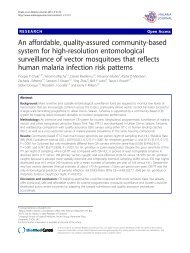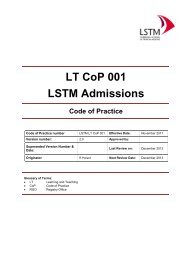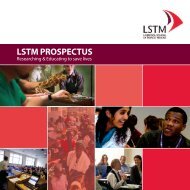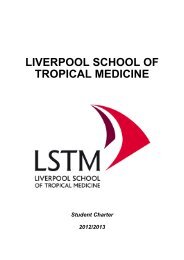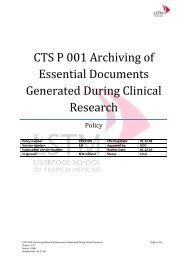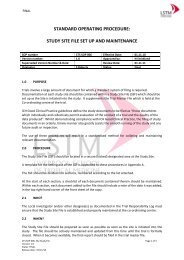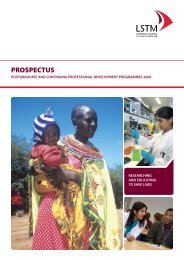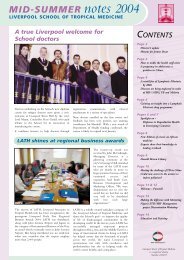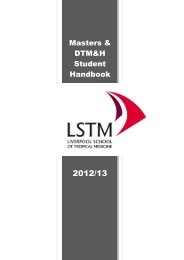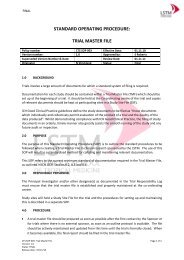Gender influences on child survival, health and nutrition: a ... - Unicef
Gender influences on child survival, health and nutrition: a ... - Unicef
Gender influences on child survival, health and nutrition: a ... - Unicef
You also want an ePaper? Increase the reach of your titles
YUMPU automatically turns print PDFs into web optimized ePapers that Google loves.
<str<strong>on</strong>g>Gender</str<strong>on</strong>g> Influences On Child Survival, Health And Nutriti<strong>on</strong>: A Narrative Review<br />
which successfully targets the most vulnerable households. In additi<strong>on</strong>, there is also the potential for<br />
these programmes to challenge <strong>and</strong> address issues of violence. For example a Save the Children cashtransfer<br />
programme in Zimbabwe that allocated transfers to women has not led to increased violence<br />
<strong>and</strong> in fact has had a positive impact <strong>on</strong> household dynamics, improving communicati<strong>on</strong> <strong>and</strong> joint<br />
decisi<strong>on</strong>-making between husb<strong>and</strong>s <strong>and</strong> wives (Save the Children UK 2011).<br />
CONCLUSION<br />
As we have seen there is paucity of evaluati<strong>on</strong>s of gender-sensitive interventi<strong>on</strong>s to address aspects of<br />
<strong>child</strong> <strong>health</strong> <strong>and</strong> nutriti<strong>on</strong>. However there are examples of impacts <strong>on</strong> social issues that are known to<br />
c<strong>on</strong>tribute to <strong>child</strong> <strong>health</strong> <strong>and</strong> nutriti<strong>on</strong> outcomes, for example the IMAGE project in South Africa<br />
evaluated the impact of a gender-sensitive interventi<strong>on</strong> <strong>on</strong> both gender-based violence <strong>and</strong> HIV <strong>and</strong><br />
found that community-based activities led to a significant reducti<strong>on</strong> in the risk of physical or sexual<br />
violence by an intimate partner (Kim et al. 2007) 20 .There is a need to document gender-sensitive<br />
interventi<strong>on</strong>s <strong>on</strong> <strong>child</strong> <strong>health</strong> <strong>and</strong> nutriti<strong>on</strong> <strong>and</strong> to make links between other interventi<strong>on</strong>s aimed at<br />
improving gender-equity in <strong>health</strong> (e.g. addressing violence) <strong>and</strong> specific <strong>child</strong> <strong>health</strong> outcomes.<br />
GENDER SENSITIVE INTERVENTIONS<br />
20 The IMAGE trial was designed as a r<strong>and</strong>omised trial <strong>and</strong> included participatory methods designed to engage the<br />
community in challenging <strong>and</strong> addressing behaviours <strong>and</strong> attitudes leading to HIV <strong>and</strong> gender-based violence. The<br />
results of the trial show that the community-based activities led to a significant reducti<strong>on</strong> in the risk of physical or<br />
sexual violence by an intimate partner. These reducti<strong>on</strong>s were linked to improvements in nine empowerment<br />
indicators which dem<strong>on</strong>strated that women had become more able to challenge violent behaviours, leave abuse<br />
relati<strong>on</strong>ships <strong>and</strong> raise awareness about violence within their communities (Kim et al., 2007).<br />
56



